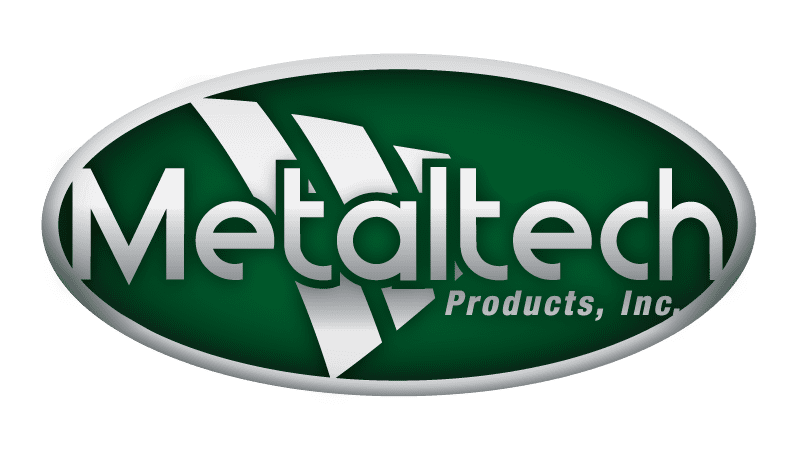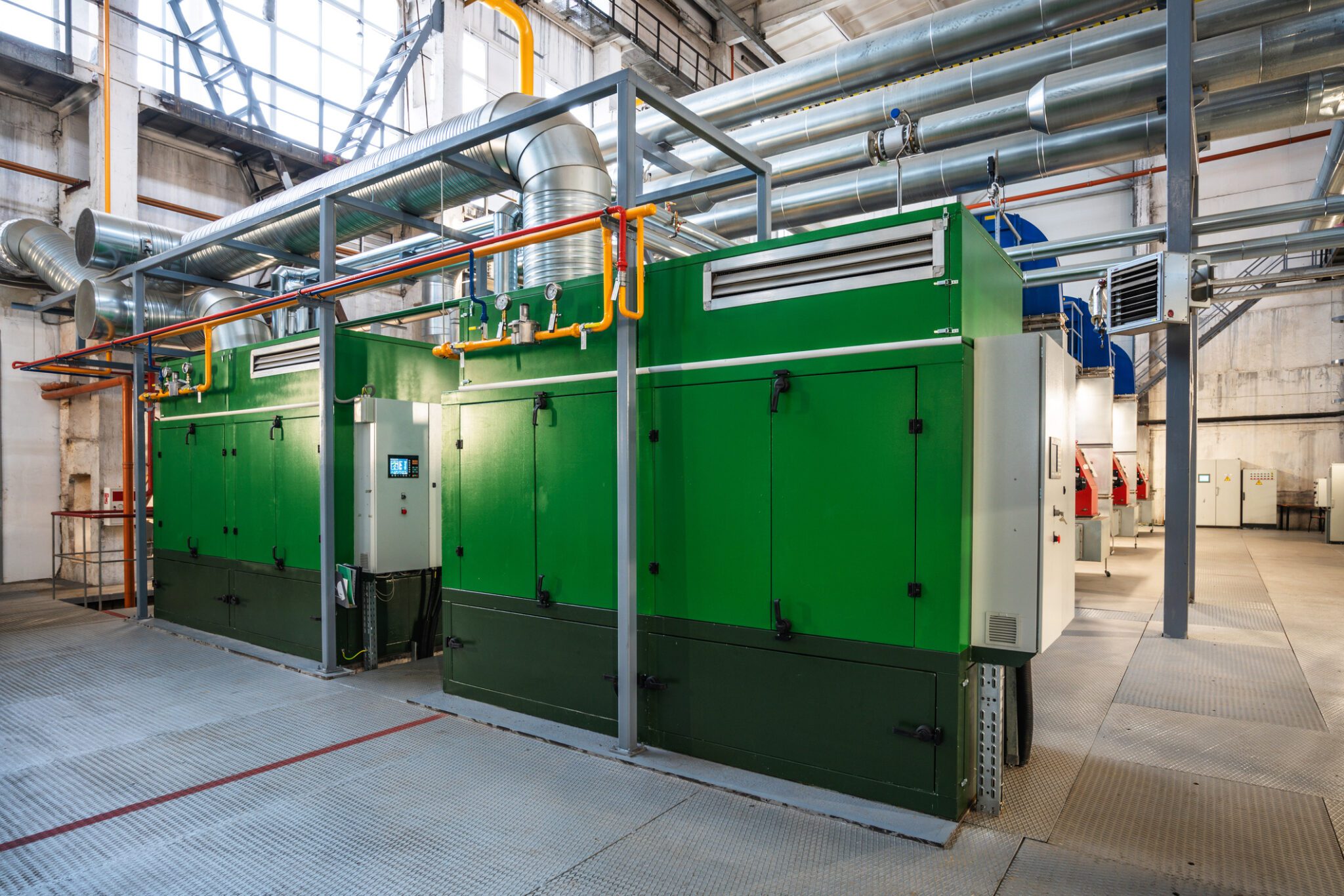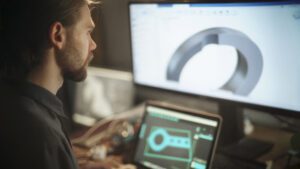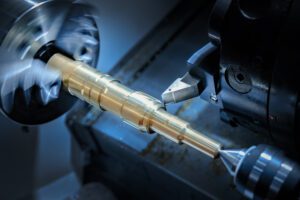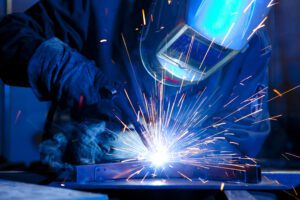From natural disasters to economic ups and downs, there are many external challenges every business must be prepared to navigate.
Power interruptions are one of those threats.
Most offices and other commercial buildings have larger and more complex backup power needs than residential homes. Backup generators, for instance, must be capable of powering more and larger devices than those in a single family home or apartment. Businesses must ensure the safety of building occupants, safeguard sensitive data, protect equipment and limit interruptions to operations and productivity.
Backup power for office buildings must be customized for the size and scope of each individual business. Equipment may include one or more backup generators, transfer switches and uninterruptible power supply. Metal fabrication plays a crucial role in producing the systems businesses rely on to continue meeting customer needs even when utility power is interrupted.
This article gives an overview of backup power needs for businesses and the equipment that meets those needs.
The Need for Backup Power
There are many different types of power disturbances that can interfere with normal business operations:
- Line noise interference
- Undervoltage
- Overvoltage
- Power sag
- Power surge
- Power outage
Depending on magnitude and duration, a power interruption can wreak havoc on your business in many ways. These may include loss of critical data, forfeiture of transactions, disruption of virtual meetings, damage to equipment and reduced productivity.
By investing in a customized backup power system, businesses of all sizes can be prepared to weather a power failure. Benefits of backup power include:
- Prevent data loss: Maintain personal customer data, financial records and other critical data.
- Reduce downtime: Minimize interruption of workflows and lost productivity.
- Cost savings: Protect equipment to avoid substantial repair and replacement costs. Examples include computers, appliances, manufacturing equipment and security systems.
Backup Power Considerations
It may not always be cost effective to keep every device running during a power outage. Managers must often prioritize which operations require backup. Considerations include regulatory requirements, occupant safety, basic operations and budgetary constraints.
For offices and other commercial buildings, basic safety priorities for backup power include:
- Exit signs
- Egress lighting
- Alarm systems
- Voice communications like intercom
- Elevators
- Ventilation and smoke control
- Power operated doors
- Refrigeration
- Water pumping
- Networking infrastructure
- Air conditioning
After accounting for these essentials, organizations must protect critical data and equipment used in business operations.
Best practices call for some degree of built-in redundancy in backup power systems. A good rule of thumb is to purchase enough backup power to handle the necessary load, plus extra backup in case a generator fails.
Backup Power Configurations

Backup power systems can be classified as either emergency backup, which generates power for critical health and safety, or standby power, which supports other organizational priorities.
Emergency Power
The top priority for emergency backup is to keep life safety systems running.
Life safety refers to anything that protects the health and safety of building occupants. In a hospital this would include ventilators and other life support equipment. For other types of organizations, examples of life safety functions would be egress lighting, fire alarms, elevators and smoke evacuation systems.
Emergency backup must deliver power to life safety equipment within 10 seconds of a power outage. However, standard generators often take a few seconds to power up, leaving a gap of several seconds which may compromise critical equipment. That’s why emergency configurations should include an uninterruptible power supply (UPS) to keep critical operations running continuously during the gap.
Standby Power
A second level priority would be electrical functions which are less critical for life safety but of high importance for business operations. Standby power can be used for building automation features, communication systems and protection of critical data such as financial records.
Backup Power Equipment
Key components of a backup power system include one or more generators, automatic transfer switches and distribution panels. An uninterruptible power supply, or UPS, provides extra protection for life safety and critical business equipment.
The number of generators will depend on the size and scope of building facilities and backup energy needs. Generators for commercial buildings can be designed for outdoor or indoor installation and are typically fueled by diesel or natural gas.
Transfer switches move the electrical load from utility power to generator power when the utility grid fails. It transfers back to utility power when the grid is restored. A distribution panel connects to circuits in the emergency backup system and includes switching and circuit protection functions. The UPS assumes the power load while the generator starts and switches back to charging mode once the generator takes over.
Commercial Backup Generators
Just like a residential unit, backup generators for commercial buildings provide power for critical systems during a utility power outage. They are essential for protecting occupant safety and minimizing any negative impact on revenue and productivity.
- The generator engine is the source of energy, and power increases with unit size. Engines typically run on diesel, propane, natural gas or propane.
- The alternator converts energy from the engine into electricity. It includes rotating and stationary components. These create the movement of electrons responsible for producing an electric charge.
- A fuel pump, which delivers fuel to the engine, typically stores between 6 and 8 hours of fuel and includes a return pipe.
- A voltage regulator facilitates the conversion between direct current (DC) and alternating current (AC).
- Cooling and exhaust systems prevent the generator from overheating and remove toxic fumes.
- A lubricating system delivers engine oil to ensure smooth operation and prevent engine damage.
- The battery charger allows the generator to start running when the utility power fails.
- The control panel includes controls and switches that allow building personnel to operate the generator.
- The main assembly or frame provides housing for the alternator, engine and other components.
Transfer Switches
A transfer switch moves power from the utility source to the backup system in the event of an outage. It also prevents dangerous backfeed in order to protect the safety of technicians as they work to restore power.
Two main types of transfer switches are automatic and manual. As the name implies, an automatic switch instantly transfers power to the backup system when an outage occurs. It is designed to sense the interruption in power, and advanced models are fast enough to make the switch with minimal impact to equipment operations. A manual switch must be physically switched from the grid to the generator by hand.
Most businesses opt for an automatic transfer switch to minimize downtime. This is especially important for maintaining life safety systems, critical equipment and sensitive data.
Transfer switches typically contain the following components:
- Connection terminals to connect power sources to the transfer switch
- A solenoid operating mechanism which seamlessly switches between utility and backup power
- A shaft to rotate contacts in position to transfer power between utility and backup
- An arcing contact which closes just before the main contacts and opens immediately afterward.
- An arc chute which contains metal plates that draw arc away from the contacts. The chute aids in cooling and dissipation.
- The pole cover protects people and objects against accidental contact and prevents interpole arcing.
Regular inspections and maintenance are needed to ensure the transfer switch will operate correctly when needed. The contacts must be replaced periodically, as arcing gradually erodes the contact surfaces.
Uninterruptible Power Supply
An uninerruptible power supply (UPS) provides power during the time it takes the generator to assume the load after a utility outage. In many cases a power gap of as little as 10 seconds may compromise occupant health and safety, as well as data security.
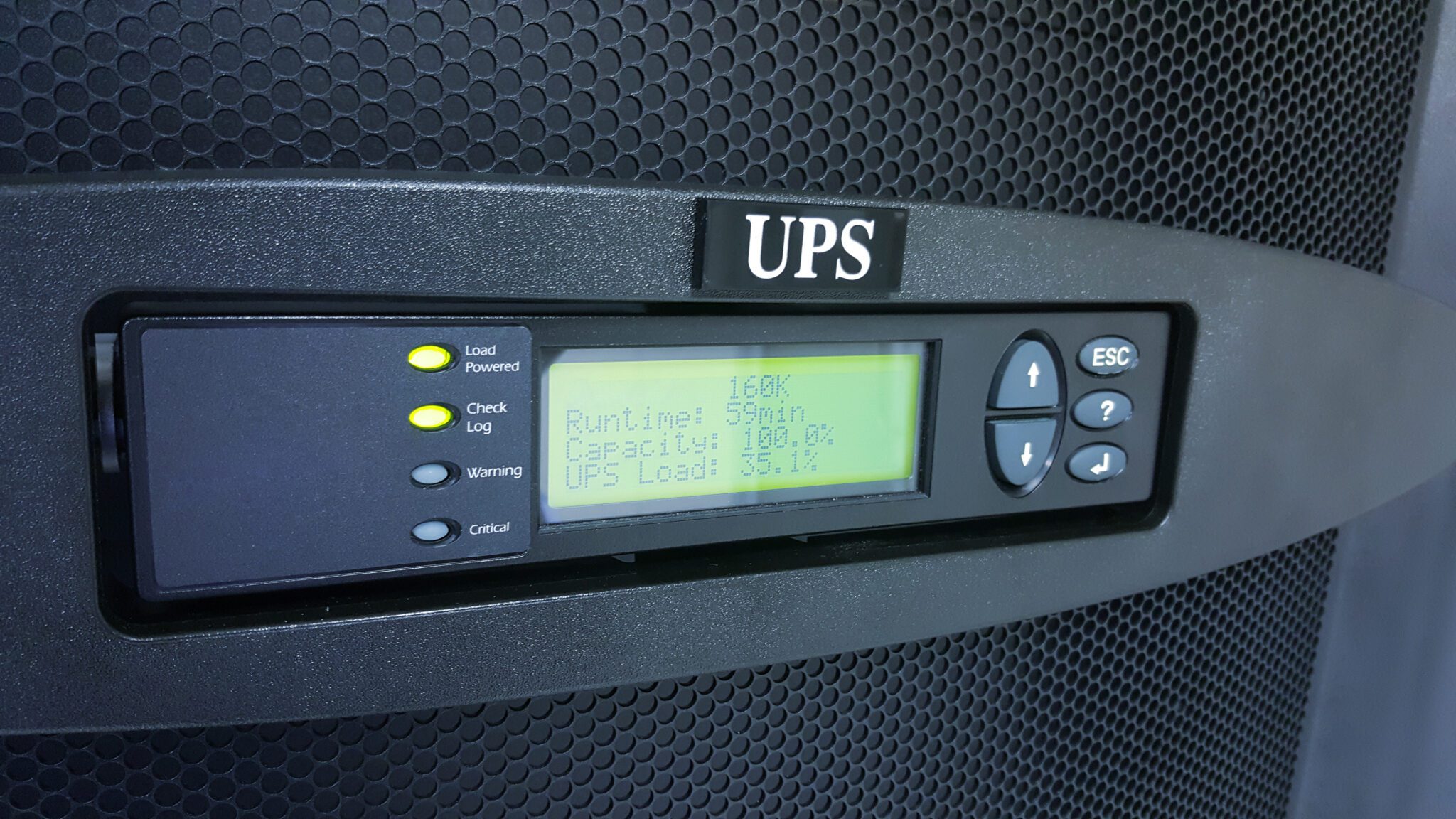

A UPS provides continuous power when an outage occurs, thanks to a built-in automatic transfer switch. This allows businesses to continue using computer systems and other equipment seamlessly. It reduces the likelihood of equipment powering off and having to reboot, and lowers the risk of losing unsaved work.
Types of UPS Systems
Three categories of UPS systems include offline-standby, line-interactive and online-double conversion.
- Offline-standby UPS is the most common type. It offers short term power for basic protection and prevents data loss. It is ideal for small businesses and even household use. Pair it with a surge protector for best results.
- Line-interactive UPS offers a greater protection that negates a range of interruptions including outages, surges, sags, overvoltages and undervoltages. It is designed for use in business settings.
- Online-double conversion UPS is used for sensitive devices and in larger business settings. It is often used in the fields of banking, medical facilities and emergency communication. It relies on battery power that is completely separate from the grid for seamless protection against all power disturbances.
UPS Components
The primary components of a UPS system include the following:
- UPS batteries provide instant, continuous power when utility power fails. It also works when the power supply fluctuates, as during a power surge or gap. Some UPS systems contain multiple batteries for extra redundancy.
- The rectifier converts power between alternating current (AC) and direct current (DC). It guards against power fluctuations such as surges and overloads. It keeps batteries recharged while DC power routes to the inverter.
- The inverter receives DC power from the rectifier, then converts it back to AC power for critical loads. It may also convert AC back to DC and switch to battery power when the main power input fails.
Additional UPS components may include:
- A static bypass switch diverts power around the batteries, rectifier and inverter to keep critical systems working if UPS components fail.
- An external maintenance bypass disconnects the UPS from the main power source during routine maintenance.
- Fans keep the system cool and should be replaced every 6 to 7 years.
- UPS capacitors smooth and filter voltage fluctuations to provide consistent power. They wear out over time and must be replaced.
Metal Components for Backup Power Systems
Metaltech has provided custom sheet metal fabrication for over 25 years. From initial design to final assembly and all points in between, we create customized components for backup power generators and UPS systems. Whether it’s a small internal component or large metal framing or racking, we work with manufacturers to produce quality components that meet the strictest industry standards.
For more information you can give us a call at 417-426-5577 or request a quote online!
